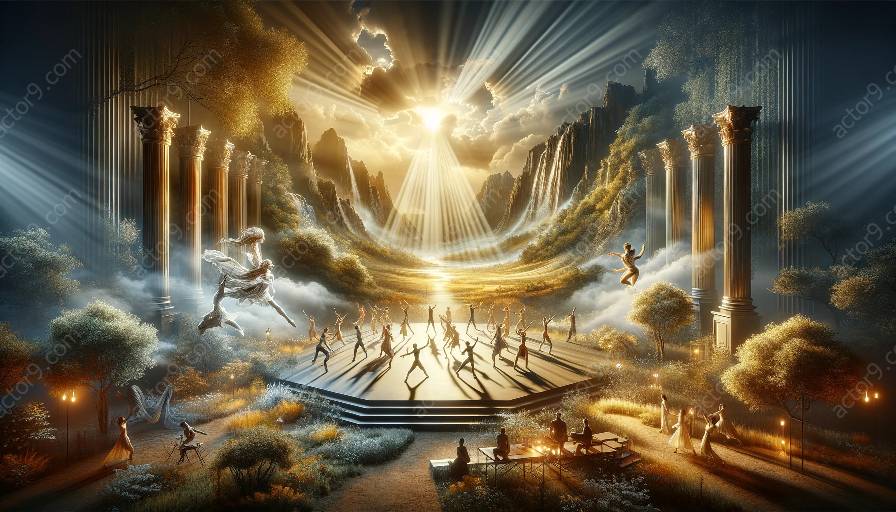Physical theatre is a dynamic and expressive art form that relies on the combination of movement, voice, and visual elements to convey meaning and emotion. Within this context, costume and lighting design play essential roles in shaping the audience's experience and enhancing the overall impact of the performance.
The Role of Lighting in Physical Theatre
Lighting design is a crucial aspect of physical theatre, as it has the power to transform the stage and create an immersive environment that supports the narrative and emotional content of the production. In physical theatre, lighting is used to accentuate movement, highlight key moments, and establish the mood and atmosphere of the performance.
One of the primary functions of lighting in physical theatre is to guide the audience's focus and perception. By strategically illuminating specific areas of the stage, lighting designers can direct the audience's attention to important actions or characters, effectively shaping the visual narrative of the performance.
Furthermore, lighting design in physical theatre often involves the use of unconventional lighting techniques, such as silhouette lighting, shadow play, and dynamic light changes, to create visually stunning and evocative scenes that complement the physicality of the performers.
Costume Design in Physical Theatre
Costume design is an integral part of physical theatre, as it serves as a visual extension of the performers' movements and expressions. In physical theatre, costumes are designed to enhance the physicality of the actors, support their characters, and contribute to the overall aesthetic and thematic elements of the production.
Costumes in physical theatre are often purposefully designed to facilitate movement and expressiveness, with careful consideration given to the fabrics, textures, and colors that can effectively convey the themes and emotions of the performance. Additionally, costume designers in physical theatre may incorporate elements of symbolism and abstraction into their designs to communicate deeper layers of meaning and significance.
Moreover, costume design in physical theatre frequently involves innovative approaches, such as the use of non-traditional materials, unconventional silhouettes, and transformative costume elements, to visually amplify the physicality and dynamism of the performers.
Integration of Costume and Lighting Design
In physical theatre, the seamless integration of costume and lighting design is crucial in creating a cohesive and impactful visual language that complements the expressive movement and storytelling on stage. Collaboration between costume and lighting designers is essential to ensure that the visual elements harmoniously support the narrative, emotional dynamics, and physicality of the performance.
Costumes and lighting can work in tandem to evoke specific moods, establish atmospheres, and delineate shifts in the performance's thematic and emotional dimensions. For example, the use of complementary color palettes in both costume and lighting design can enhance the visual coherence of the production, while dynamic lighting effects can interact with the textures and shapes of the costumes to accentuate the performers' movements.
Furthermore, the strategic coordination of costume and lighting design can aid in guiding the audience's interpretation and emotional engagement with the performance. By aligning the visual elements to complement the physical and emotional narratives on stage, this synergy can heighten the overall impact of the production.
The Impact of Costume and Lighting Design in Physical Theatre
Ultimately, the combined influence of costume and lighting design in physical theatre extends beyond the visual aspects of the performance, significantly contributing to the audience's immersive experience and emotional connection with the narrative and characters.
Costumes and lighting design have the power to transform the stage into a dynamic and evocative space, enhancing the expressiveness of the performers and enriching the audience's perception of the storytelling. Through innovative and intentional design choices, costume and lighting designers in physical theatre contribute to the creation of memorable and compelling visual narratives that complement and elevate the expressive capabilities of physical theatre.
In conclusion, costume and lighting design in physical theatre play integral roles in shaping the audience's experience and enhancing the overall impact of the performance. By understanding the role of lighting in physical theatre and the significance of costume design, we gain insight into the intricacies and creativity that contribute to the captivating world of physical theatre.




































